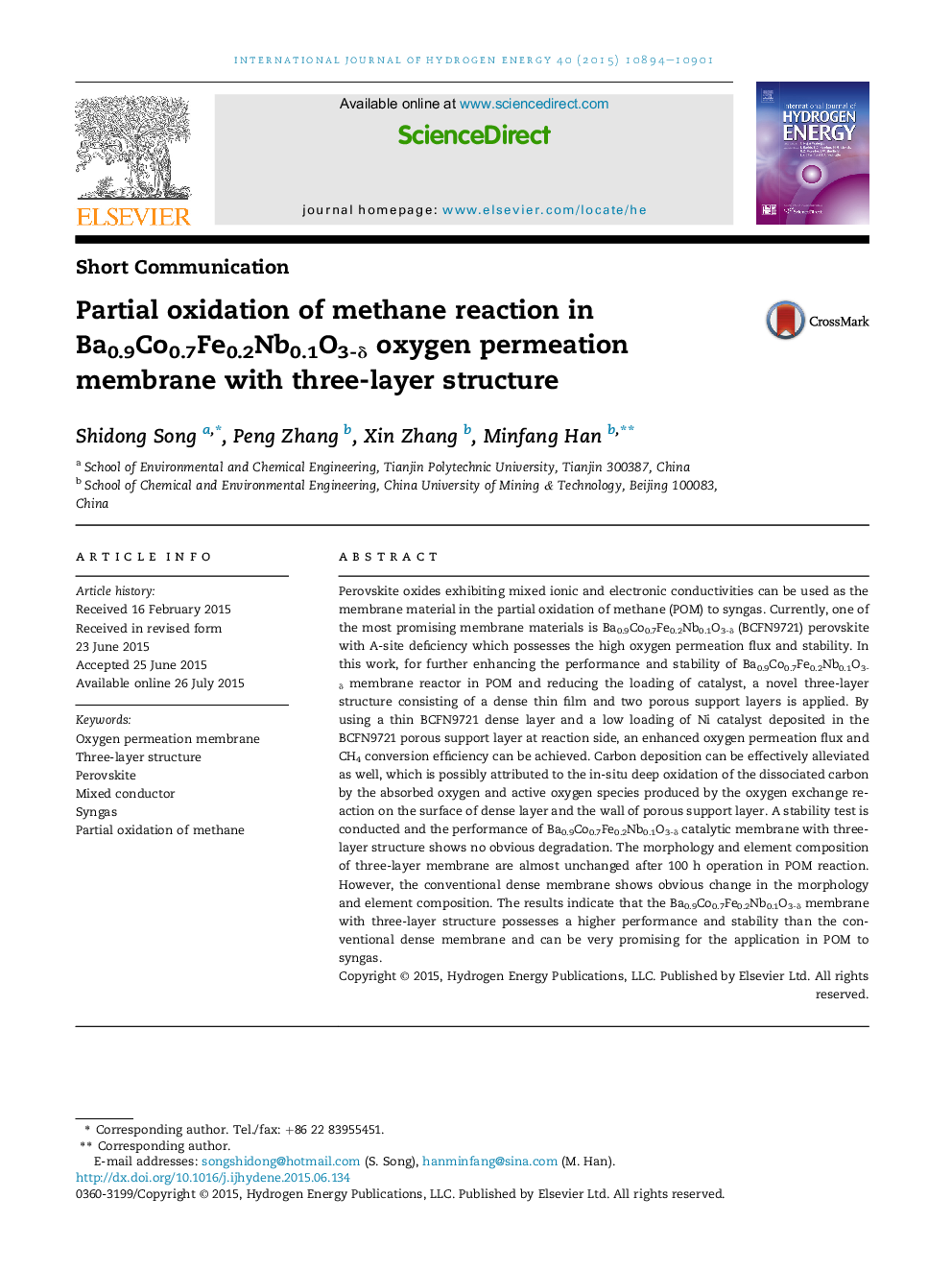| Article ID | Journal | Published Year | Pages | File Type |
|---|---|---|---|---|
| 7714566 | International Journal of Hydrogen Energy | 2015 | 8 Pages |
Abstract
Perovskite oxides exhibiting mixed ionic and electronic conductivities can be used as the membrane material in the partial oxidation of methane (POM) to syngas. Currently, one of the most promising membrane materials is Ba0.9Co0.7Fe0.2Nb0.1O3-δ (BCFN9721) perovskite with A-site deficiency which possesses the high oxygen permeation flux and stability. In this work, for further enhancing the performance and stability of Ba0.9Co0.7Fe0.2Nb0.1O3-δ membrane reactor in POM and reducing the loading of catalyst, a novel three-layer structure consisting of a dense thin film and two porous support layers is applied. By using a thin BCFN9721 dense layer and a low loading of Ni catalyst deposited in the BCFN9721 porous support layer at reaction side, an enhanced oxygen permeation flux and CH4 conversion efficiency can be achieved. Carbon deposition can be effectively alleviated as well, which is possibly attributed to the in-situ deep oxidation of the dissociated carbon by the absorbed oxygen and active oxygen species produced by the oxygen exchange reaction on the surface of dense layer and the wall of porous support layer. A stability test is conducted and the performance of Ba0.9Co0.7Fe0.2Nb0.1O3-δ catalytic membrane with three-layer structure shows no obvious degradation. The morphology and element composition of three-layer membrane are almost unchanged after 100 h operation in POM reaction. However, the conventional dense membrane shows obvious change in the morphology and element composition. The results indicate that the Ba0.9Co0.7Fe0.2Nb0.1O3-δ membrane with three-layer structure possesses a higher performance and stability than the conventional dense membrane and can be very promising for the application in POM to syngas.
Keywords
Related Topics
Physical Sciences and Engineering
Chemistry
Electrochemistry
Authors
Shidong Song, Peng Zhang, Xin Zhang, Minfang Han,
